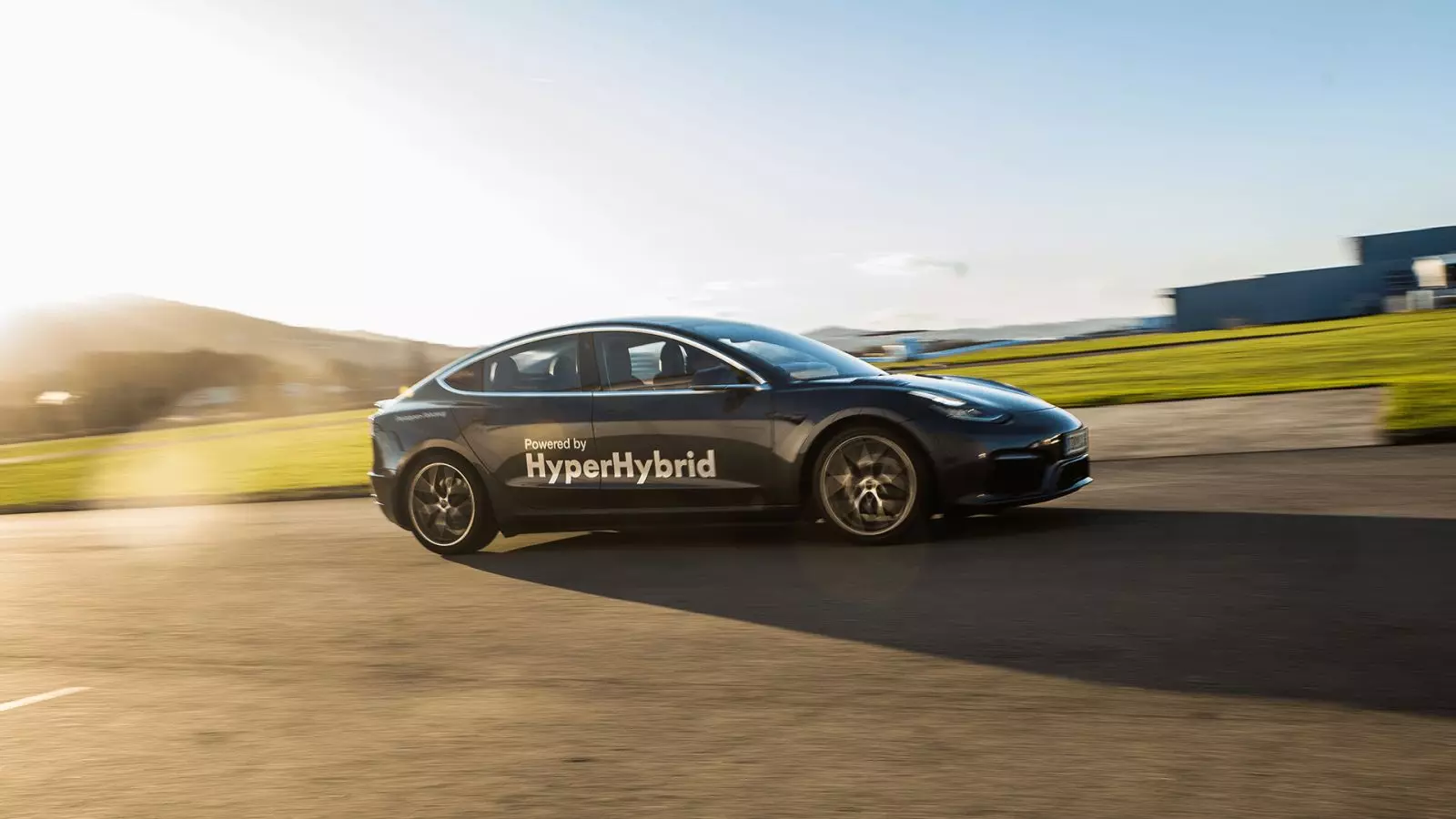No, this time it's not a 'fail day' joke. In "countercurrent" to the current trend of electrification, the Austrians from Obrist decided that what was really lacking in the Tesla Model 3 it was… an internal combustion engine.
Perhaps inspired by models like the BMW i3 with range extender or the first generation of the “twins” Opel Ampera/Chevrolet Volt, Obrist turned the Model 3 into an electric with range extender, offering it a small gasoline engine with 1.0 l of capacity and only two cylinders placed where the front luggage compartment used to be.
But there is more. Thanks to the adoption of a range extender, this Tesla Model 3, which Obrist called HyperHybrid Mark II, was able to give up the batteries that normally equip the North American model and adopt a smaller, cheaper and lighter battery with 17.3 kWh of capacity and about 98 kg.

How it works?
The basic concept behind the HyperHybrid Mark II that Obrist unveiled at this year's Munich Motor Show is relatively simple. Whenever the battery reaches 50% charge, the gasoline engine, with a thermal efficiency of 42%, “takes into action”.Always operating at an ideal regime, it is capable of producing 40 kW of energy at 5000 rpm, a value that can rise to 45 kW if this engine “burns” eMethanol. As for the energy produced, this is obviously used to charge the battery which then powers a 100 kW (136 hp) electric motor connected to the rear wheels.
The ideal solution?
At first glance, this solution seems to solve some of the “problems” of 100% electric models. It reduces the “anxiety of autonomy”, offering a considerable total autonomy (approximately 1500 km), allows to save on the cost of batteries and even on the total weight, normally inflated by the use of large battery packs.
However, not everything “is roses”. First, the small engine/generator consumes gasoline, on average 2.01 l/100 km (in the NEDC cycle it announces 0.97 /100 km). In addition, the 100% electric range is a modest 96 km.
It's true that the electricity consumption advertised when this Tesla Model 3 works as an electric with range extender is 7.3 kWh/100 km, but let's not forget that this system ends up presenting something that the normal Model 3 doesn't have: carbon emissions that, according to Obrist, are fixed at 23 g/km of CO2.
eMethanol, a fuel with a future?
But beware, Obrist has a plan to "combat" these emissions. Remember the eMethanol we mentioned above? For Obrist, this fuel can allow the combustion engine to work in a carbon-neutral way, thanks to an interesting production process for this fuel.
The plan includes the creation of huge solar energy production plants, the desalination of sea water, the production of hydrogen from that water and the extraction of CO2 from the atmosphere, all to later produce methanol (CH3OH).
According to the Austrian company, to produce 1 kg of this eMethanol (nicknamed Fuel) 2 kg of seawater, 3372 kg of extracted air and about 12 kWh of electricity are needed, with Obrist stating that in this process they are still produced 1.5 kg of oxygen.
Still a prototype, Obrist's idea is to create a versatile system that can be applied to models from other manufacturers, at a cost of around 2,000 euros.
Considering all the complexity of this process and the fact that the normal Tesla Model 3 already has a very appreciable autonomy, we leave you a question: is it worth transforming the Model 3 or was it better to leave it as it was?
